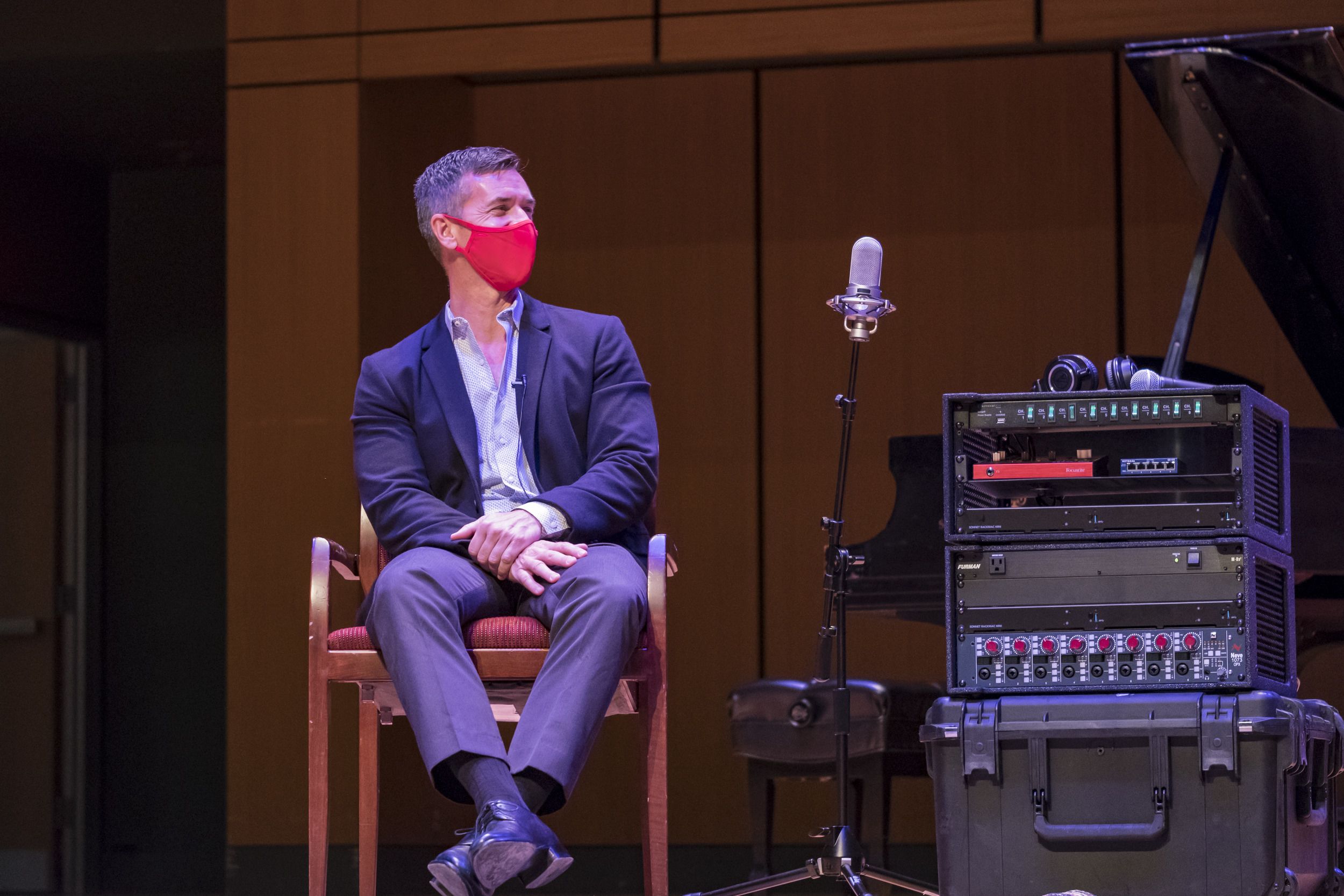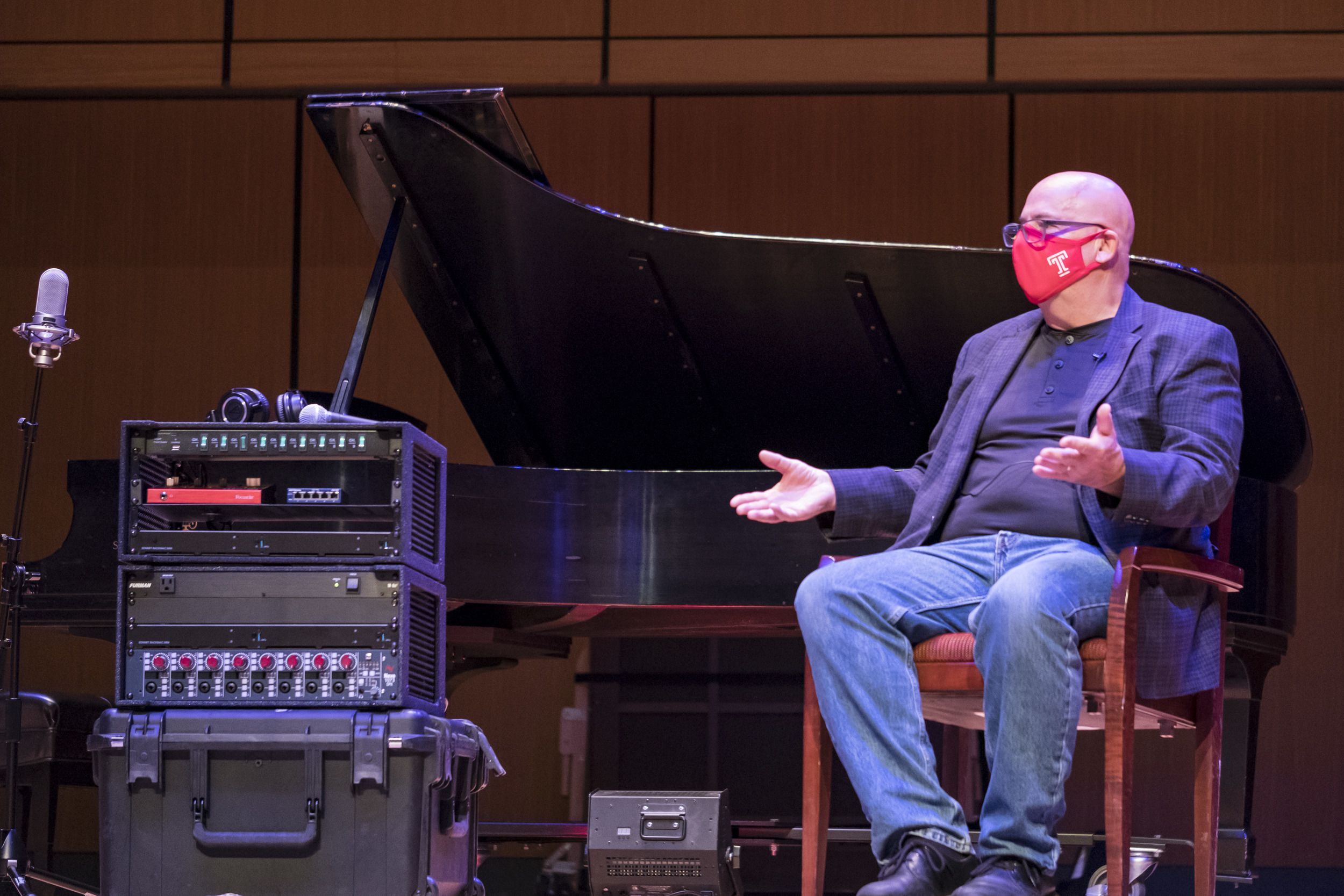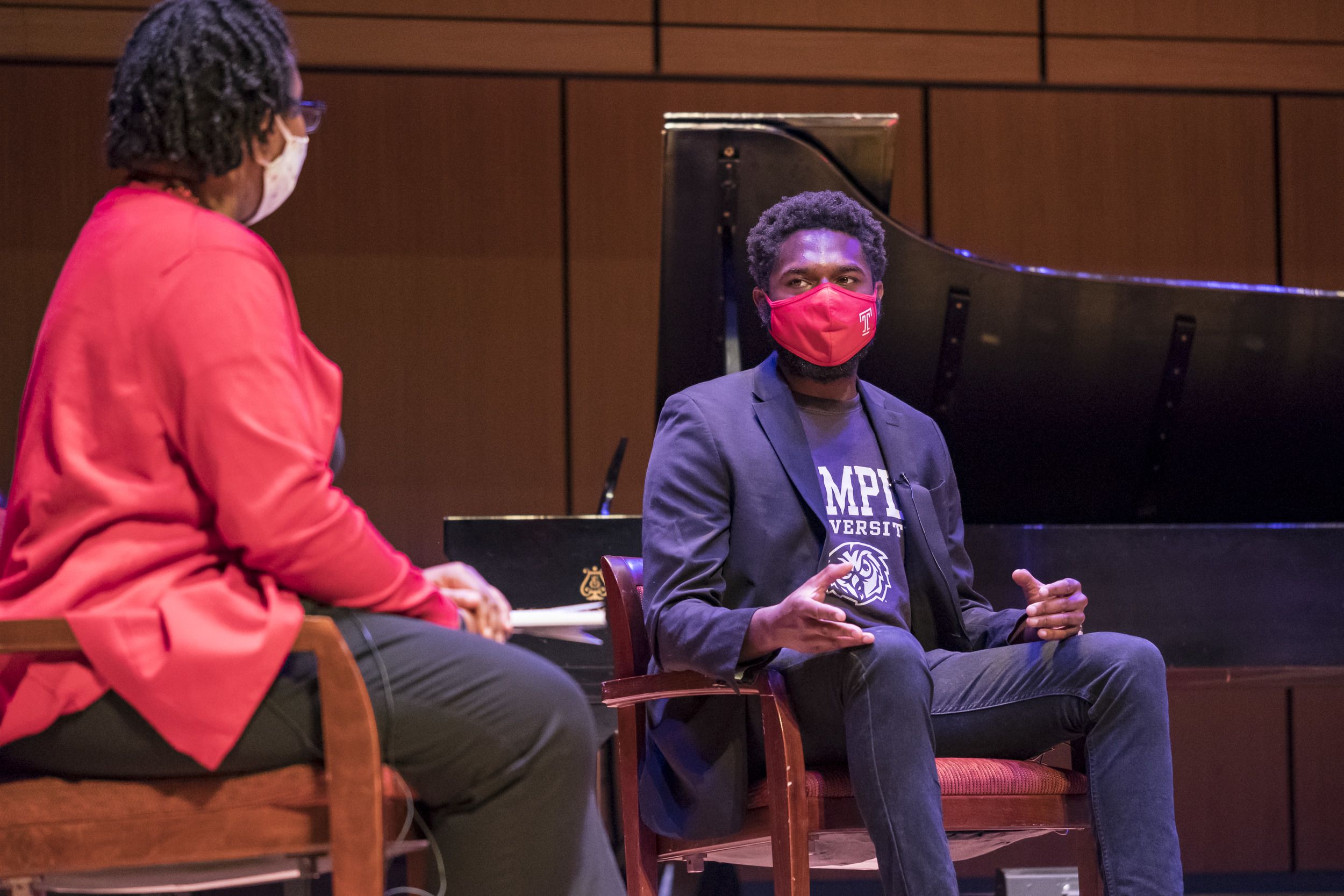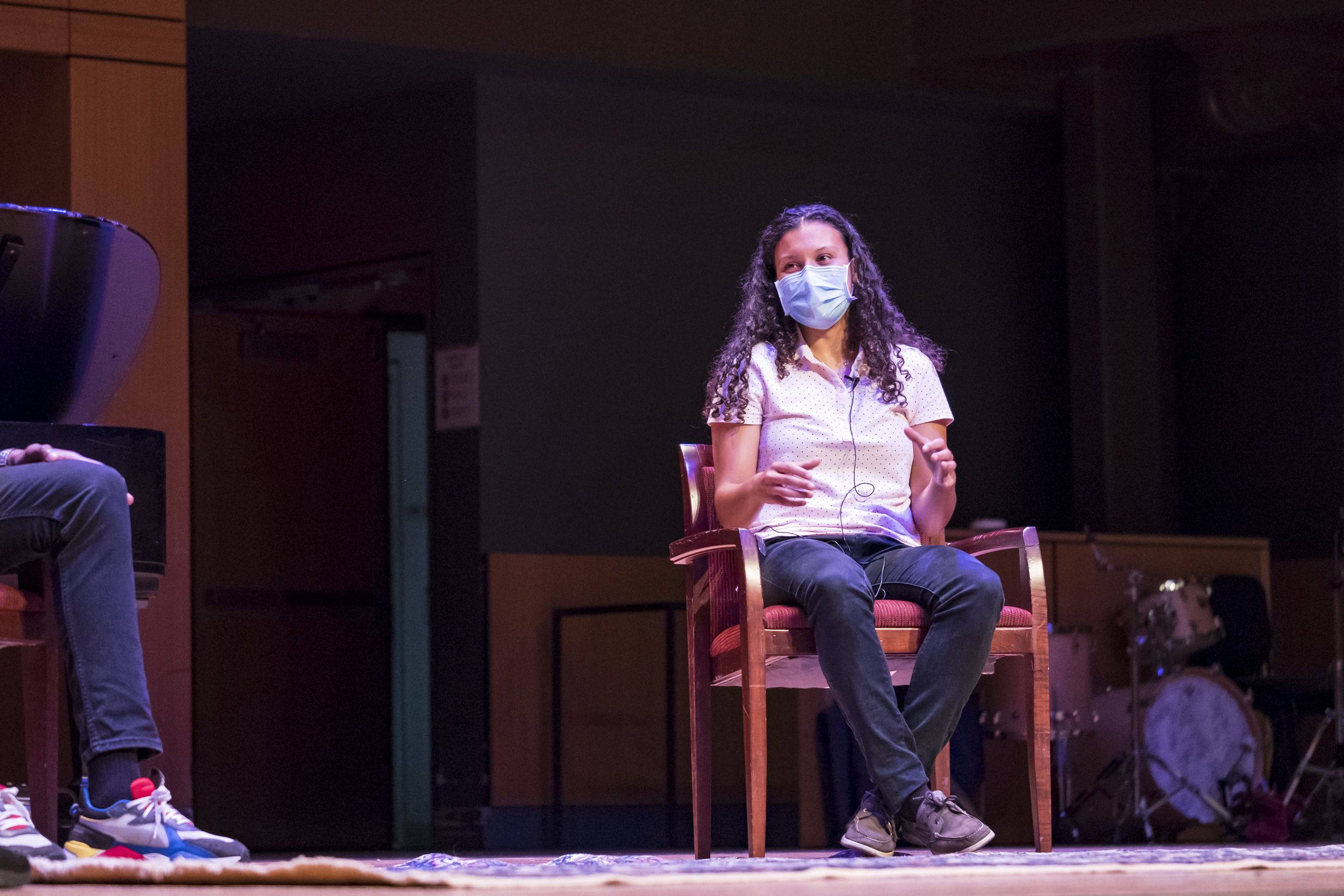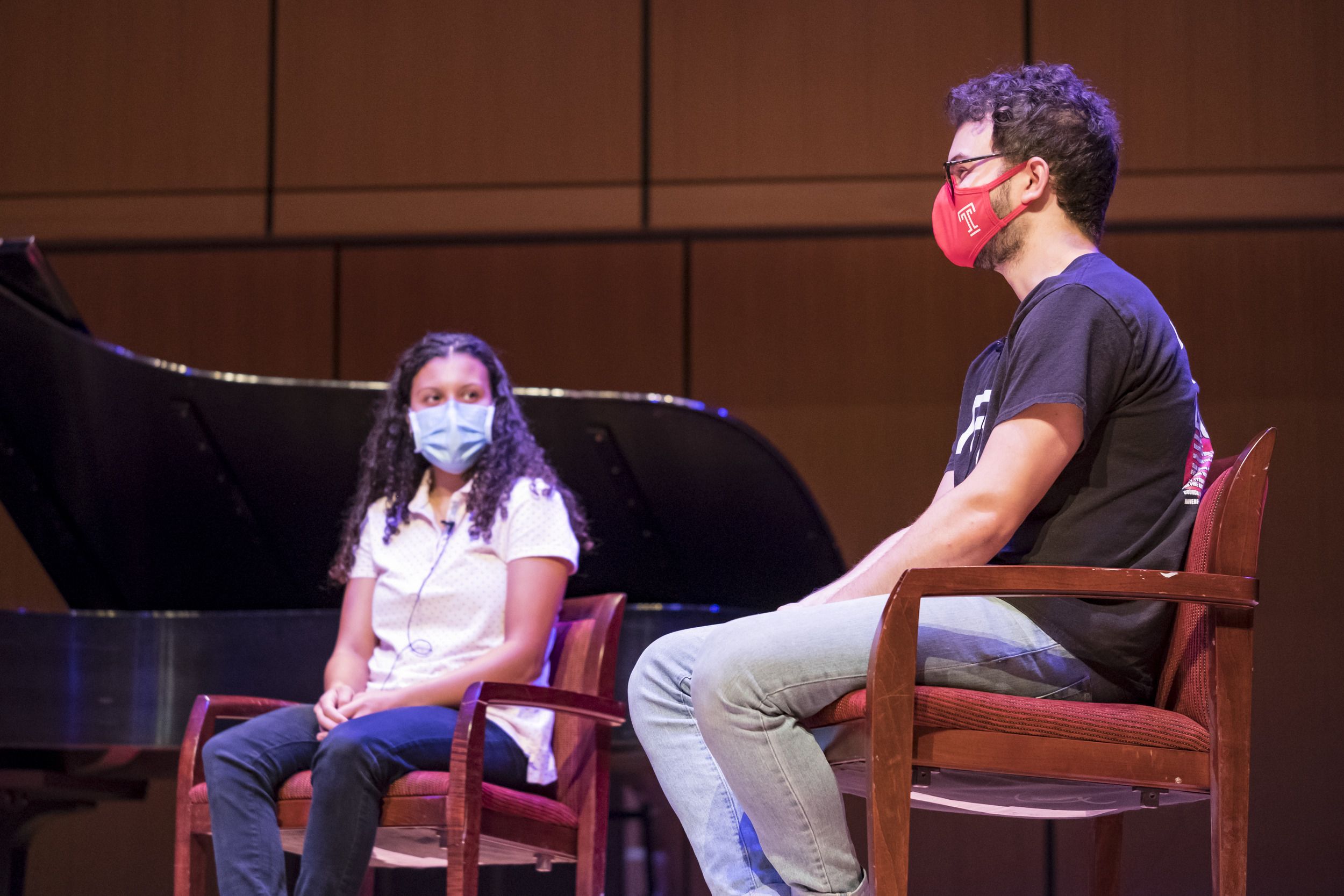All together now
Making Temple University Jazz Band’s Covid Sessions
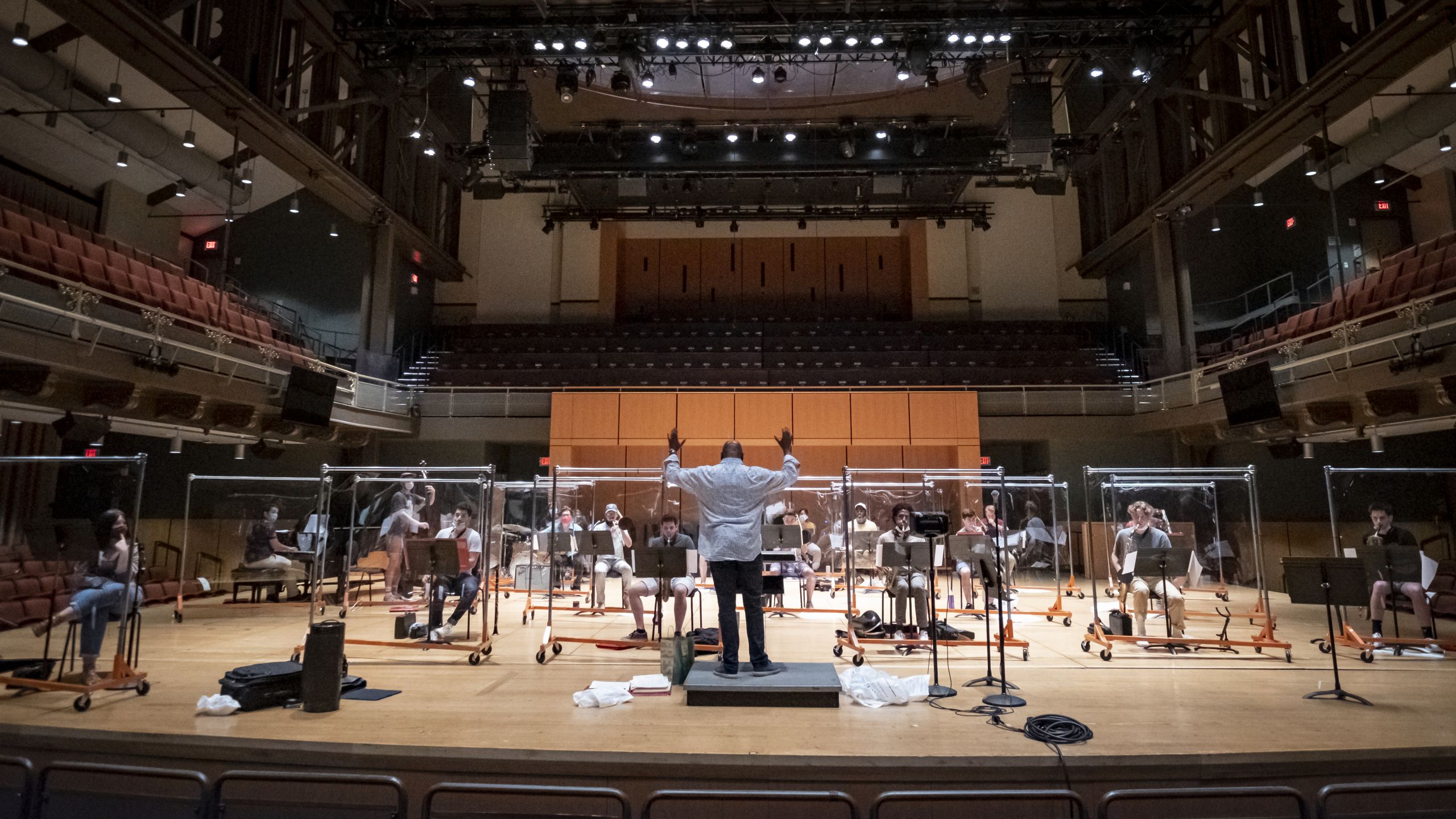
Produced during the pandemic, the band’s latest album was recorded remotely, with students performing alone or in small groups. Then engineers put the pieces together to make a unified sound.
Ask Terell Stafford, chair of instrumental studies at Boyer College of Music and Dance and director of the Temple University Jazz Band, what makes big band jazz special and he’ll tell you it’s all about the blend: a handful of sections working together to create a single, unified sound.
Covid Sessions: A Social Call, the jazz band’s latest album, is the embodiment of that spirit. The music was recorded during the coronavirus pandemic, with students performing alone or in small groups, and mixed by sound engineers who put the band back together, piece by piece.
The album was originally conceived in January 2020 as a showcase for the music the band had performed at the Midwest Clinic International Band, Orchestra and Music Conference, as well as a tribute to Philadelphian saxophonist and big band leader Jimmy Heath, who had died at the beginning of the year. “We wanted to document the hard work the students put in during the year,” Stafford said.
Everything changed when the pandemic lockdown forced Temple to transition to remote instruction in March. Hoping the band might be able to record in July, Stafford encouraged his students to keep playing at home. “It started as an exercise to keep the students inside of the music,” he said. “So when we came back in person, we could record the project.”
But when it became clear the band wouldn’t be able to record as an ensemble, David Pasbrig, associate professor of music studies, and John Harris, adjunct faculty member in the music technology program, had a solution: Record each member separately, remotely.
“Every single one of the students was remarkably diligent about their level of performance. They really wanted to do a great job. And that’s one of the reasons that it took so long. It wasn’t just that you played it once and let it go. It was that you played it, we listened to it, we talked about it and then we did it again.”
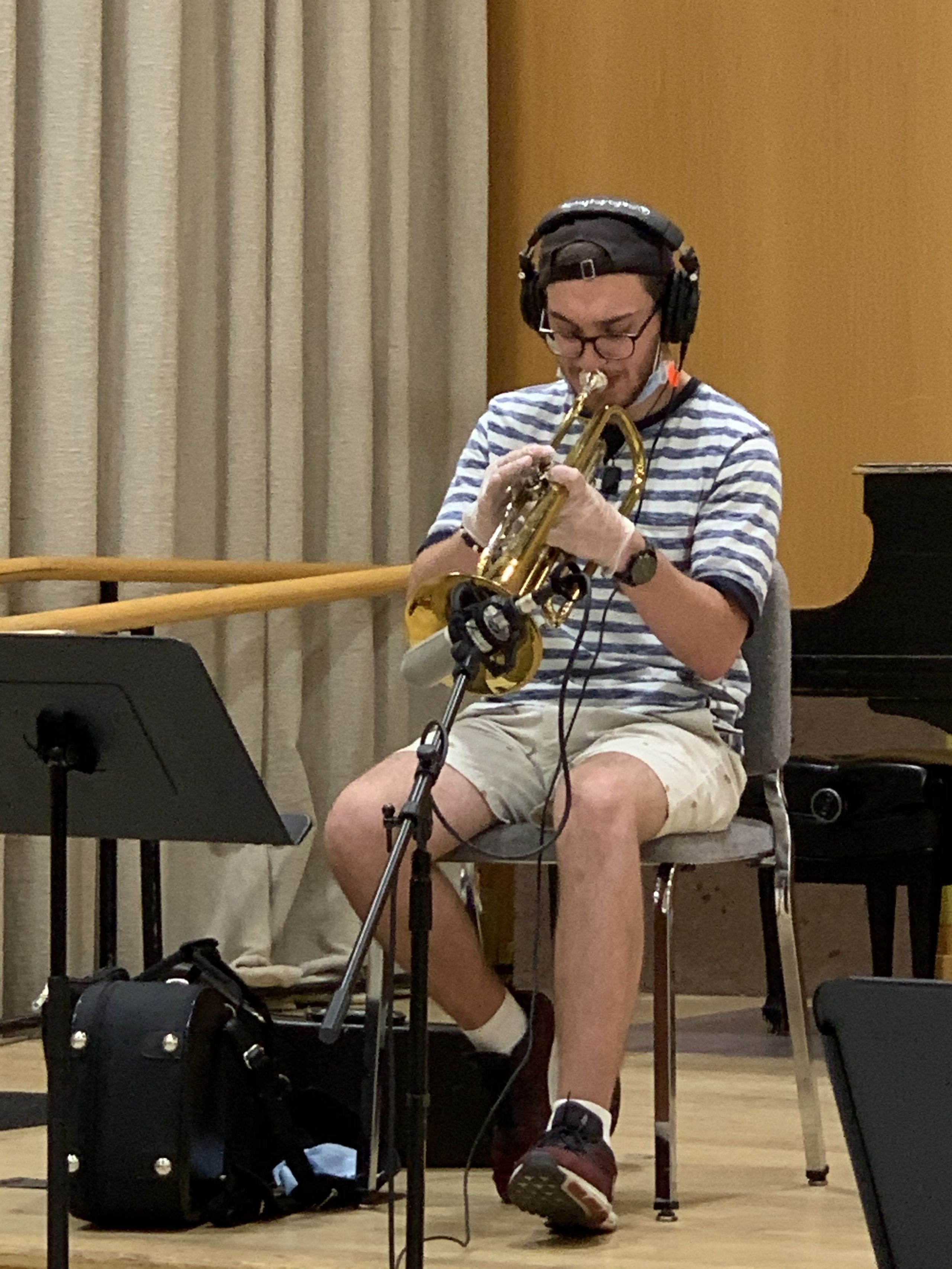
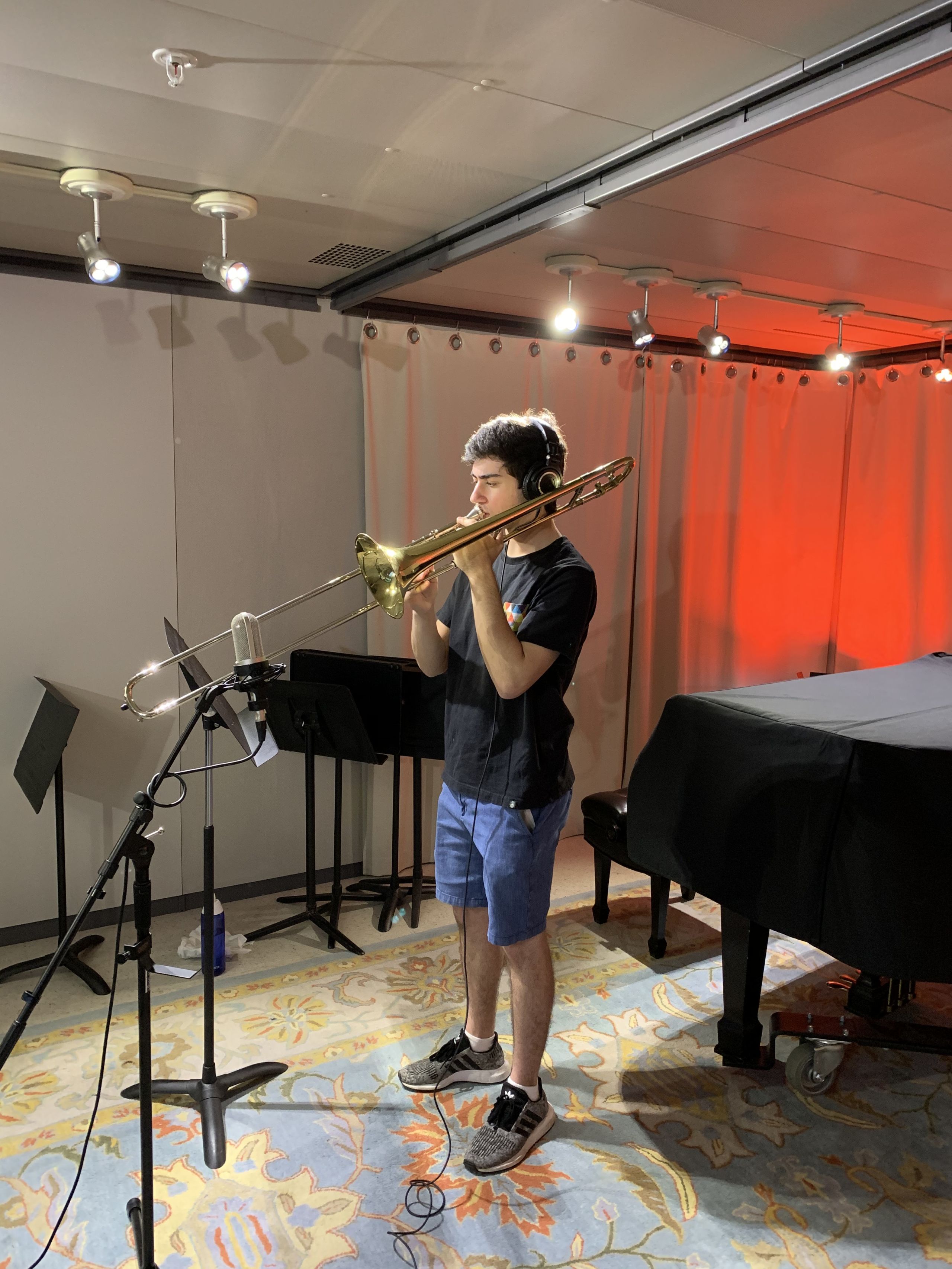
Harris and Pasbrig developed what they call “boxes”—portable sound rigs that allow musicians to perform while a sound engineer listens to and records them remotely.
“It’s essentially a small recording studio in there, in the respect that it can input the audio from a microphone, record it in a digital audio recorder, monitor it (so the performer can hear himself) and at the same time play back the piece that he is playing with,” Harris said.
Students were sent the boxes, along with microphones, stands, and both written and video instructions for how to set up the equipment and plug it into their home router. “From there, all they had to do was turn on the power and I, or John, could do the rest, from wherever we were,” Pasbrig said.
He and Harris used a recording of the band’s Midwest performance as a reference for laying down the album’s basics. The drummer, for example, listened to her original performance and played to it, recreating its timing and style. Her work was sent to the bassist, who played to the new recording and his original one. The process went on and on, building individual tracks and eventually, an entire album.
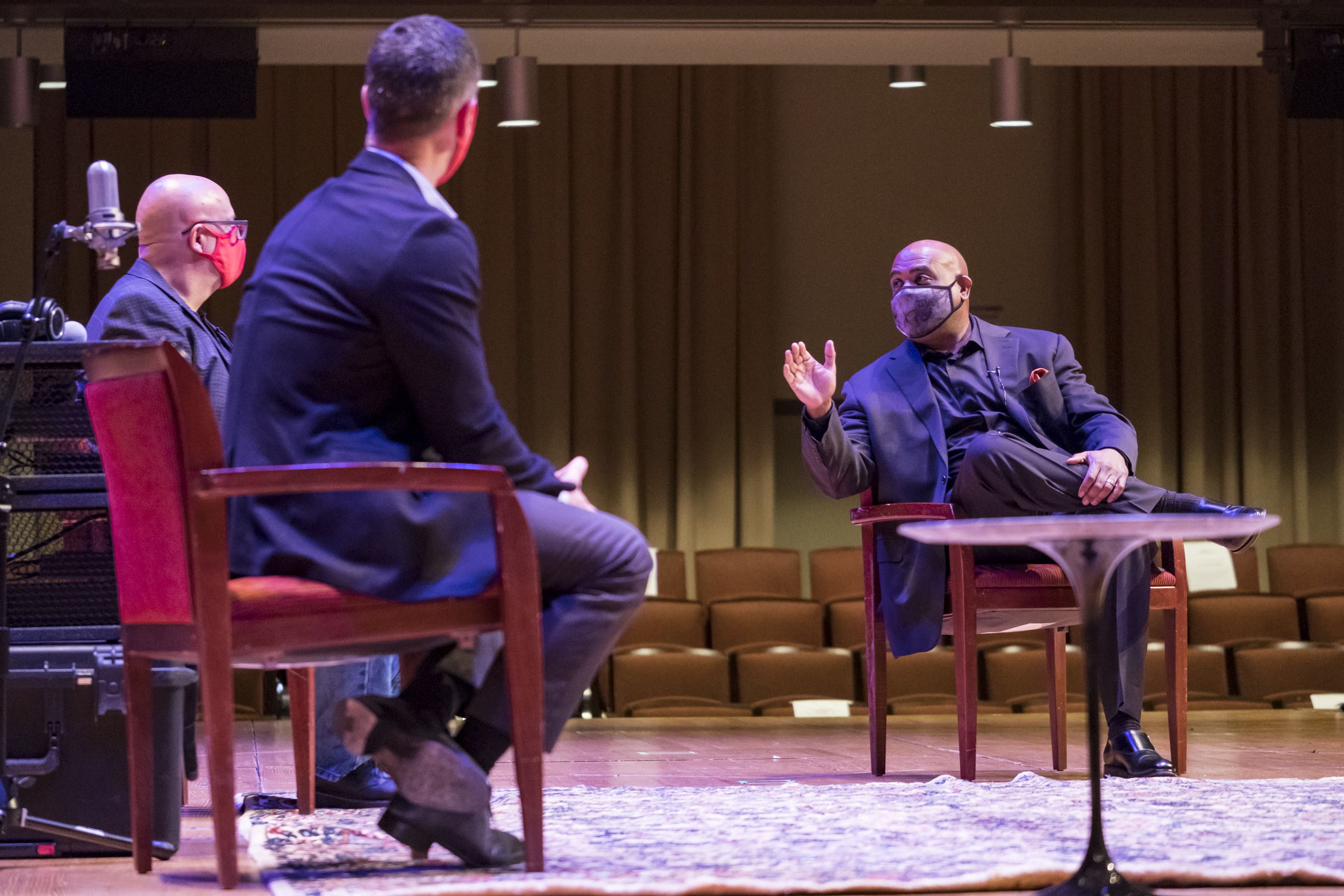
Terell Stafford in conversation with John Harris and David Pasbrig.
Terell Stafford in conversation with John Harris and David Pasbrig.
Covid Sessions runs about 30 minutes, but the recording sessions were anywhere from four to six hours. Drummer Maria Marmarou, Class of 2022, lives close to Temple and recorded on campus with another drummer, with both keeping their distance.
“It was sort of difficult, but cool, playing along to a previous recording in our headphones,” she said. “But being drummers and always having to have that intensity, it was not that hard to keep that same drive and energy. Even if the whole band wasn't there.”
Bassist Nathan Pence, BYR ’19, ’21, recorded at home in St. Louis, on a particularly hot day. The ceiling fan was on in his room and neither he nor the recording engineer thought much of it, until the sound couldn’t be removed from the mix and he had to record everything again.
“It was definitely a testament to how good of a job everybody involved in the process wanted to do,” Pence said. “We all wanted a product that we were very proud of.”
Performing in close-to-isolation was a challenge. “When we’re playing with the full band together, it’s so communal and everybody’s relying on everybody else’s energies,” said trumpeter Fareed Simpson-Hankins, BYR ’19, ’21. Playing alone or with just one person changes that. “You just have to imagine or bring the energy yourself,” he said.
Stafford hopes listeners can hear the passion and joy that went into Covid Sessions. “I think what Philadelphia has, what Temple has, is a very specific sound,” he said. “That passion: It’s swing and soul, groove and trust. Because for me that’s what’s important.”
The music on the album, including Duke Ellington’s “Diminuendo and Crescendo in Blue,” isn’t easy. “It wasn’t all 12 bar blues for this record. It was music that was super complex, super involved. It took dedication. And I hope people hear that,” Stafford said.
Covid Sessions was also an opportunity to show students it’s possible to keep creating art in challenging circumstances. “I’m glad that we were able to do this and do it at Temple,” Harris said. “I’m glad we’re able to help the students find their footing.”
“I think [the album] is a symbol. Because we’re in the pandemic and it’s a really sad and dark time for everybody. But we still managed to record this joyful album with our friends,” Simpson-Hankins said. “Even though we weren’t around them when we did it.”
Thinking inside the box
David Pasbrig, associate professor of music studies, and John Harris, adjunct faculty member in the music technology program, experimented with different designs before perfecting the boxes. Getting some of the gear was difficult—because stores had closed and delivery schedules were disrupted due to the pandemic—and shipping it to students was a logistical challenge as well.
The effort was well worth it. “What’s interesting about the boxes is their ability to be so powerful in such a small space,” Harris said. “Now a studio can be wherever you want it to be.”
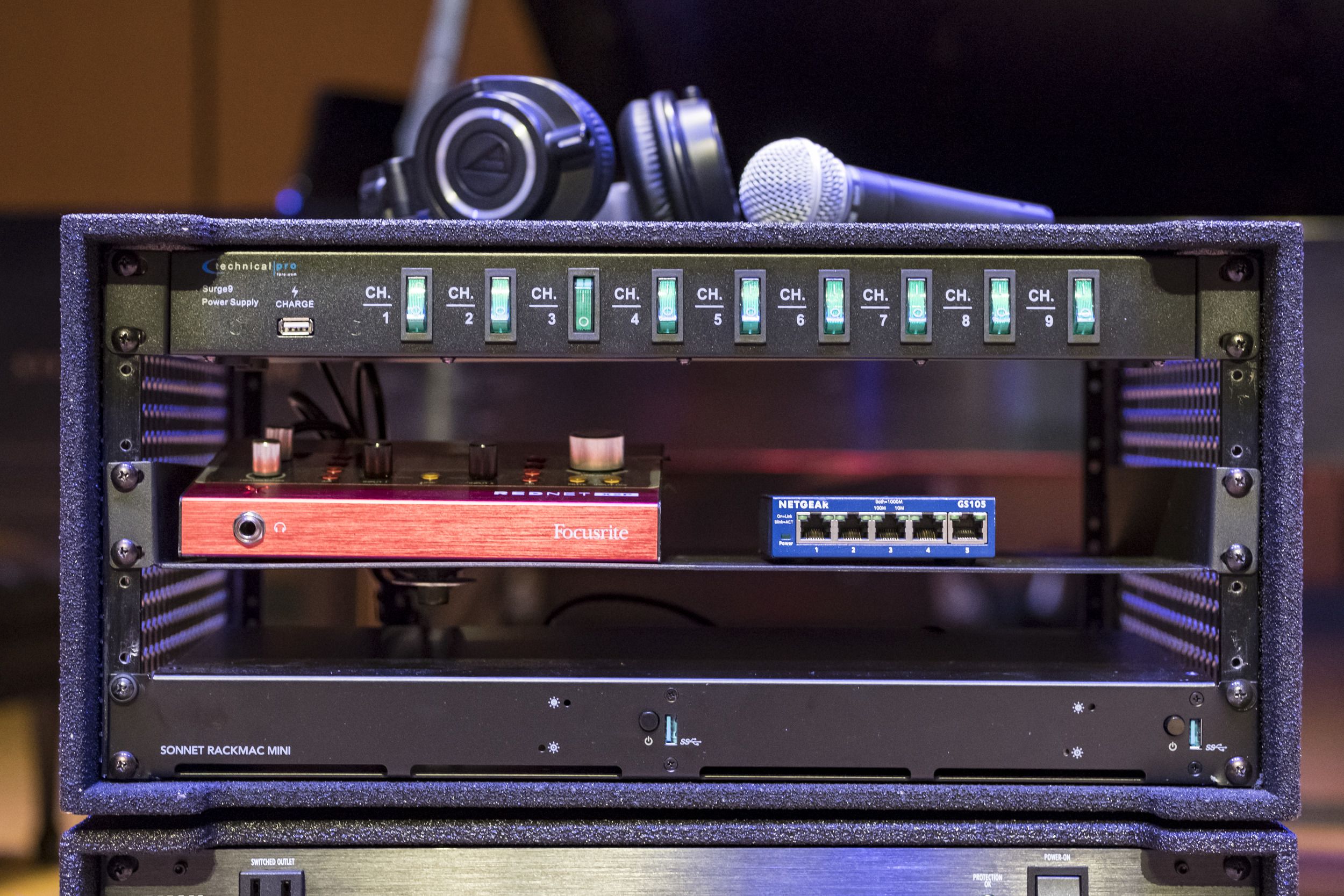
The soul of big band
Big band jazz has been around since the 1920s (aka the Jazz Age) and the Temple University Jazz Band’s repertoire includes music from across the form’s history. Playing such a large range of pieces has given Pence an even greater appreciation of his instrument.
“I learned a lot about the role of my instrument within a band,” he said. “When you go back through the history of the music and you listen to music from the 20s and 30s and how that led to everything that came after it, you start to understand the role of all of our separate instruments.”
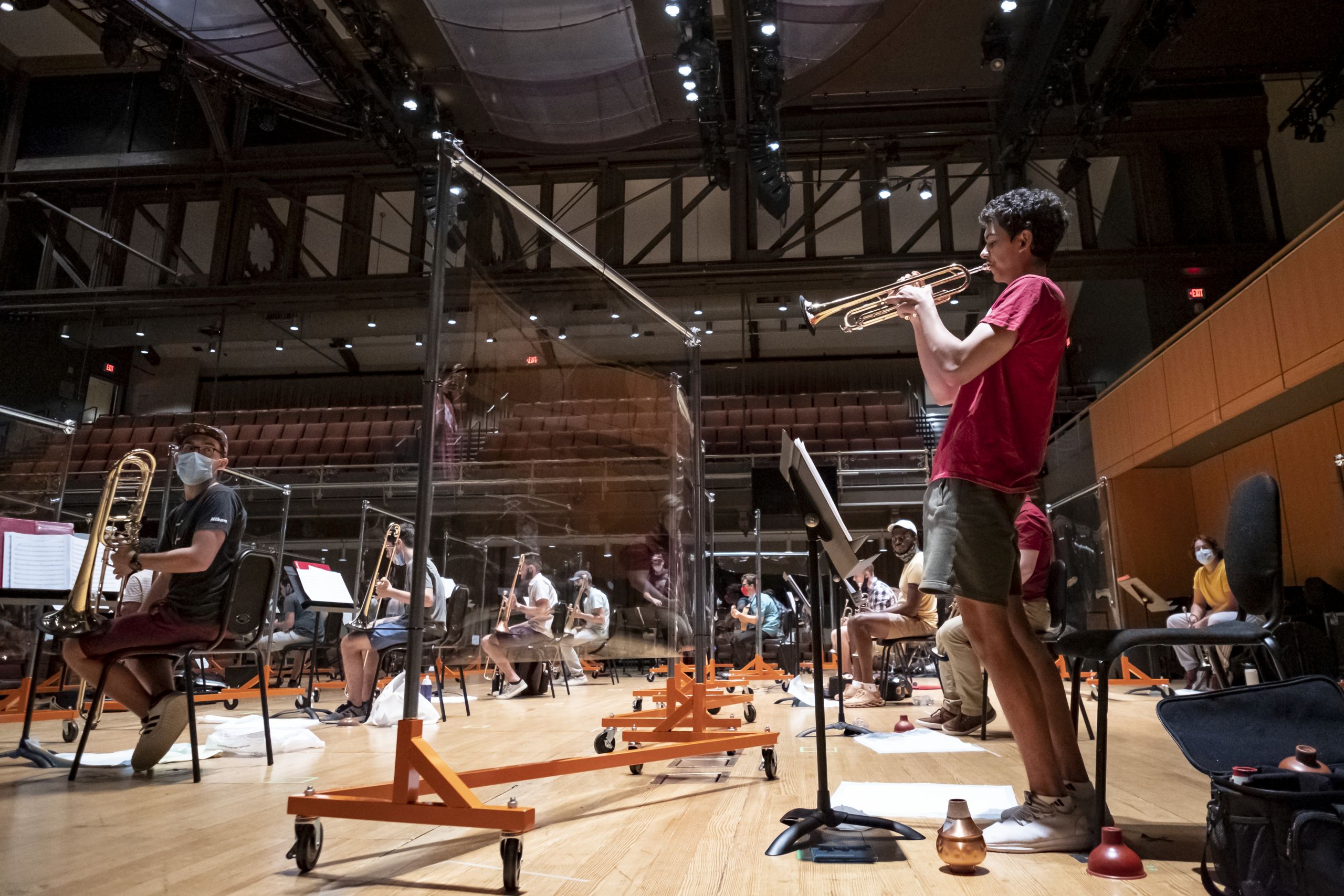
The Temple University Jazz Band rehearsed together at the beginning of the fall 2020 semester, before the university moved to largely online instruction. We're bringing you photos from that rehearsal, alongside music from the album and sound bites from the people who brought it to life. You can listen to the full album online.


